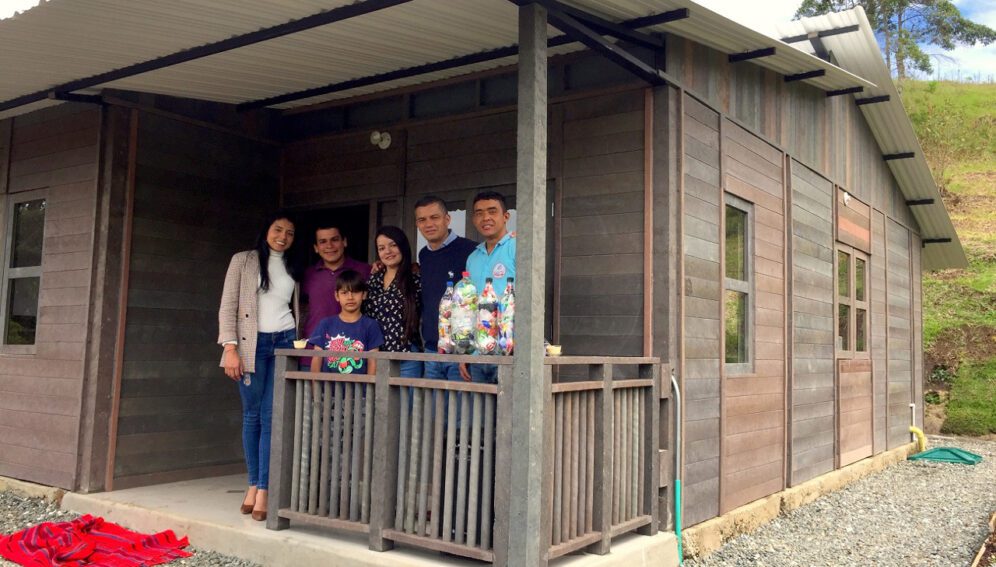By: Aleida Rueda
Send to a friend
The details you provide on this page will not be used to send unsolicited email, and will not be sold to a 3rd party. See privacy policy.
[MEXICO CITY] Homes made of discarded plastic bottles, construction waste and old tyres are being built across Latin America as new technologies help turn municipal waste into sustainable bricks and tiles.
Across the region, recycling firms are turning their hands to construction, tackling a pollution problem and a housing crisis in one fell swoop.
“I have learned a lot about how to handle household waste to reduce the impact it generates on the environment,” said Javier Sebastian Folmer, a resident of the municipality of Crespo, in the province of Entre Ríos, just north of the Argentinian capital Buenos Aires.
Folmer, who runs the municipality’s Environmental Park, is one of an army of citizens in the region whose perception of waste has been transformed because they became part of the process that recovers it and turns it into raw materials for housing.
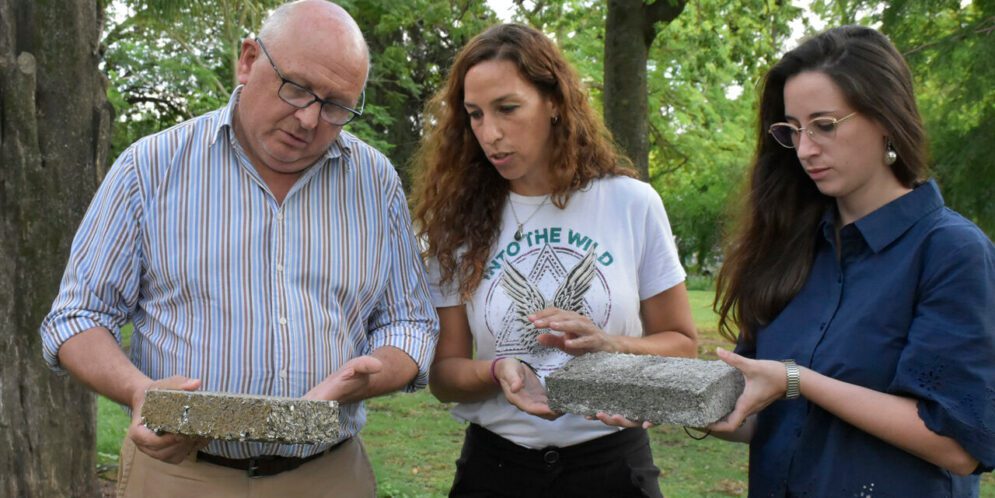
The recycling plant produces around 10 million bricks every month from plastic bottles. Picture credit: The municipality of Crespo.
Every month, the park receives between 3,000 and 5,000 kilos of plastic bottles discarded by the city’s 23,000 inhabitants.
These bottles undergo a process that includes crushing and compression in a recycling plant to transform them into nearly 10,000 bricks.
“I think that in some way I changed the way I consume,” Folmer told SciDev.Net. “Everywhere I go, I bring my own reusable bag.”
The science behind the plant came from the Experimental Center for Economic Housing (CEVE in Spanish), in Córdoba, Argentina, a department of the National Council for Scientific and Technical Research.
Shredded rubber
At CEVE, researcher María Paz Sánchez Amono uses shredded rubber that comes from old tires, as well as plastics from discarded pipes, bags and barrels and turns them into tiles through a heated moulding process.
The process is then transferred to governments, companies and organizations so that they can establish their own recycling plants, like the one in Crespo.
“There are social, environmental and housing projects throughout the entire Argentinian territory, carried out with CEVE systems and components,” Sánchez Amono told SciDev.Net.
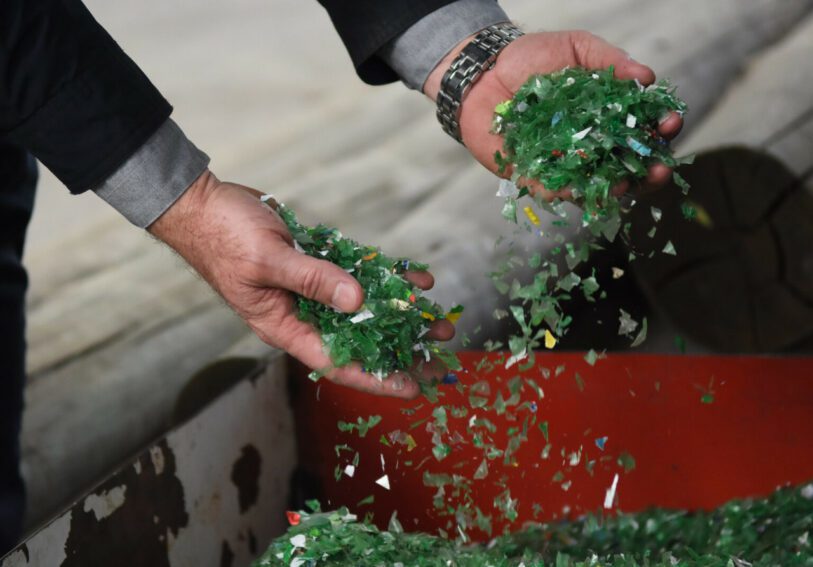


At CEVE, in Córdoba, technological know-how is transferred to communities so they can set up recycling plants. Picture credit: The municipality of Crespo.
This transfer has allowed people from different parts of the country to take ownership of the technology and work with it to reduce waste, but also to become aware of the importance of transforming it into something useful.
“The plant changed our perspective,” Gabriel Fontana, who is in charge of the recycling plant in Crespo, told SciDev.Net. “Garbage is no longer garbage but a usable resource.”
For Jerónimo Kreiker, who is in charge of making the CEVE technology available to other organisations, this type of project has a significant impact on society, because it generates jobs, helps revalue waste, and improves environmental management.
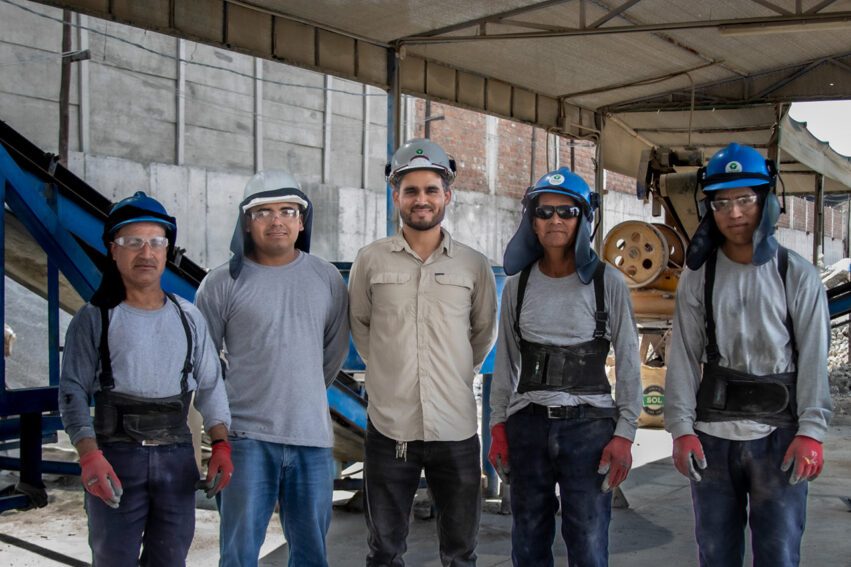


Roger Mori and part of his team from CICLO, a construction waste recycling company in Peru. Image credit: CICLO
“They are simple technologies with a low investment cost, but with an enormous social and environmental impact for any society,” he said.
These processes answer a pressing need for housing in Argentina, and across the region.
“In Argentina, the lack of access to housing affects almost all sectors of the population,” said CEVE researcher Sánchez Amono.
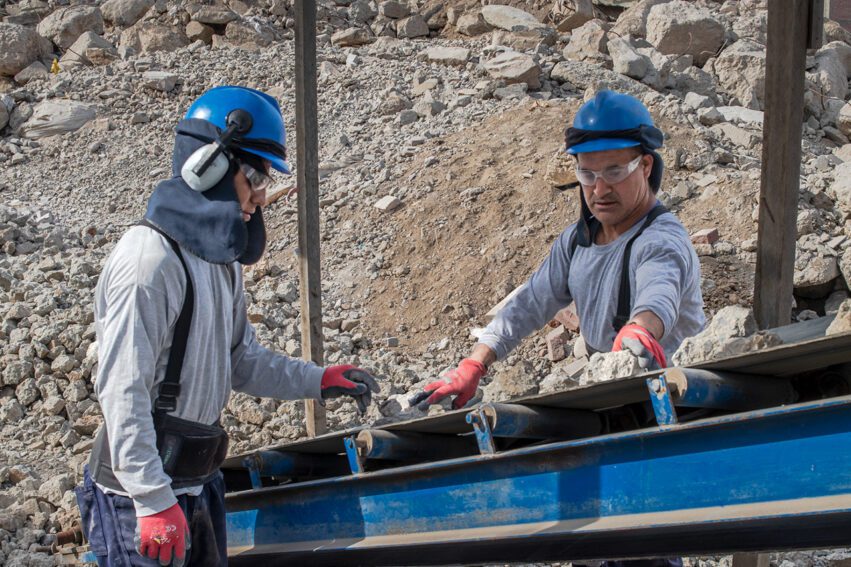


Eladio Casahuamán (right) has become a key CICLO operator. Image credit: CICLO
According to 2023 data from CAF Development Bank of Latin America and the Caribbean, almost 70 million people across the region lack adequate housing.
“In Crespo, there is also a housing deficit – we are more and more, and more people are arriving,” explained Raquel Gorostiaga, project manager of the Environmental Park in Crespo.
Five houses made with the plastic tiles will be inaugurated in Crespo this year.Top of Form
“The idea is to provide these houses for low-income seniors,” explained Gorostiaga.
Bottles of love
In Colombia, the Botellas de Amor Foundation – which means bottles of love in Spanish – has collected more than 4,000 tons of flexible plastic waste since it launched in 2016.
The organization crushes and compresses it to produce bricks and walls made entirely with recycled plastic to build homes, playgrounds and classrooms.
They have carried out more than 500 social projects that include 90 homes for low-income people in places such as Cartagena, San Andrés Islas and Providencia, and La Guajira.
One of those people is Juan Felipe Román Sánchez, an organic farmer from the community of El Retiro in the department of Antioquia.
He lived in a bedroom in his parents’ house and did not have the possibility of renting a house to live with his wife and his son. But in October 2019 he was selected by the Community Action Board of Vereda El Chuscal, a town to the north of the Colombian capital Bogota, to acquire a house built by Botellas de Amor.
“When they told me it was a house made of plastic, I didn’t know what that was, I imagined it was a greenhouse like the ones we use for crops,” Román Sánchez said.
Now he is the proud owner of a house made of waste.
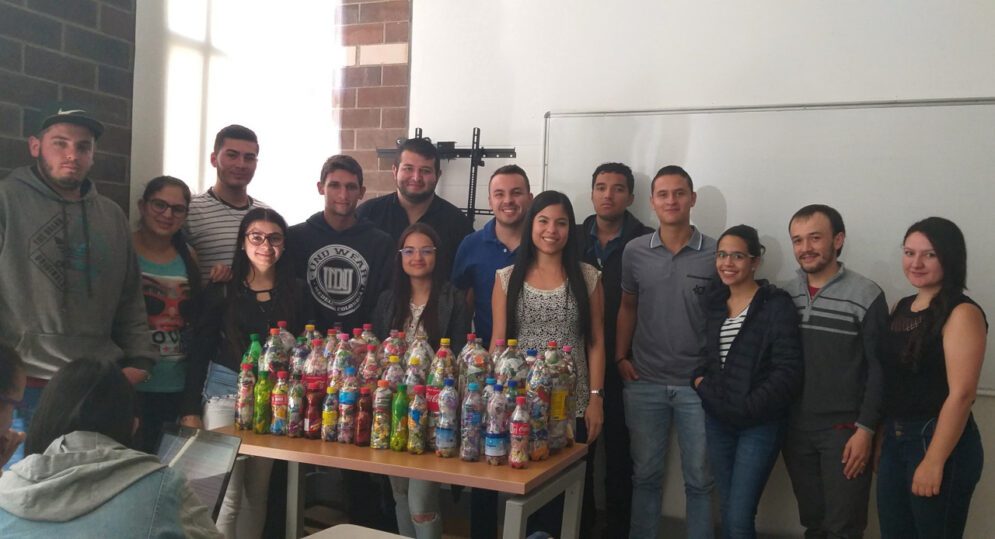


Since 2016, the Botellas de Amor team has collected thousands of tons of household and industrial plastic waste. Picture credit: Fundación Botellas de Amor.
The project is possible thanks to the contribution of thousands of ordinary Colombian citizens who fill plastic bottles with plastic waste and deposit them in the more than 300 collection points run by Botellas de Amor.
“At first they told us ‘It is very difficult to make people fill a bottle with plastic,’” said Kelly Rodríguez, co-founder of Botellas de Amor.
“But we began to communicate the idea, and tell them that the plastic they are throwing away ends up in landfills and oceans. We went to schools, companies.
“Today we … receive more material than we are capable of processing,” Rodríguez told SciDev.Net. “We have 5,000 tons of bottles stored and more continue to arrive.”
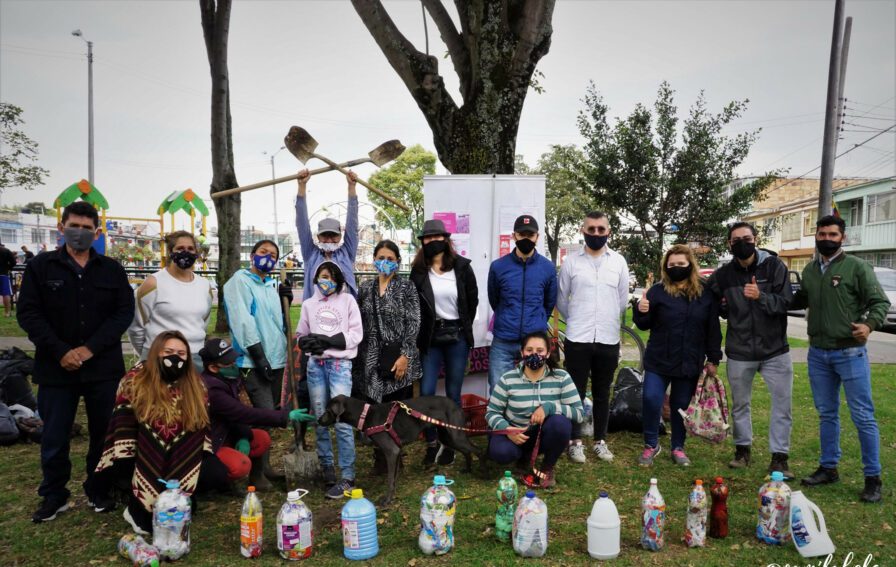


Not even the pandemic could stop the collection of plastic at the Botellas de Amor collection points. Picture credit: Fundación Botellas de Amor.
Although the number of waste recycling projects are growing in the region, the challenge often lies in scaling them up.
“Of the roughly 6 million tons of construction waste that Lima generates every year, we still don’t recycle even one per cent,” explained Roger Mori in Peru, founder of CICLO, a company which removes construction waste such as concrete, rods, sand, and gravel and turns it into new building materials.
“Last year, we recycled about 40 thousand tons, that is, we are still in a fairly early stage,” he said.
Sánchez Amono, from Argentina’s CEVE, considers that part of the problem is that sustainable construction has only recently been added to degree courses in architecture and engineering.
“There is a lack of knowledge on the subject among construction professionals and there is little promotion of these products,” she said.
But, despite the challenges, the biggest impact is on social perception – when people participate in waste collection or recycling processes, they feel empowered and see themselves as agents of change.
“I became aware of the amount of waste that is generated daily and the difference that can be made from each home when we separate it,” explained Gabriel Fontana, from the recycling plant in Crespo, Argentina.
“I believe that with this simple task, we can help the planet.”
This piece was produced by SciDev.Net’s Latin America & Caribbean desk.


